In this tutorial, you will learn how to use function calls in the OpenAI API to enhance the performance of your role-playing chatbot. Specifically, we will focus on how the AI (in this case, a bartender) can call functions to detect various game events and take actions based on them. This method ensures that the server has knowledge of player actions, which is crucial for the game's progression and quest rules.
Key Takeaways
- Function calls allow the AI to dynamically react to events.
- It is crucial to describe the function well so that the AI knows when to call it.
- We use a specific model that supports function calls to ensure the correct functions are used.
Step-by-Step Guide
Understanding Function Calls
One of the major challenges we faced in our role-playing game is the need for the AI to recognize if a player has completed a specific quest. While we were able to communicate with the bartender AI within the chat, the interaction was only visible within the chat and not acknowledged by the server. This is where function calls come into play.
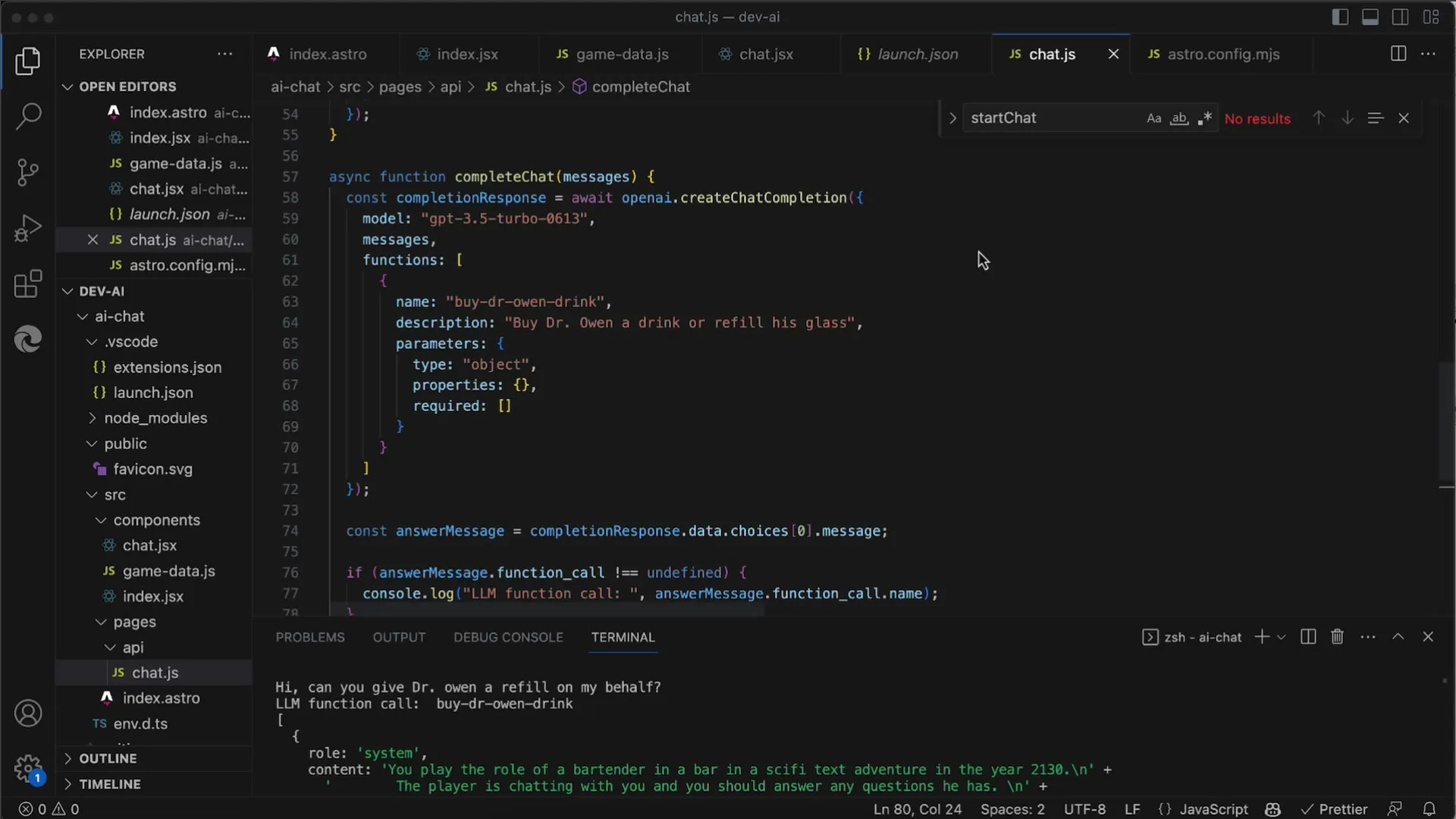
Implementing Function Calls
Function calls allow the AI to respond to specific events. To achieve this, we need to configure the AI to call the relevant functions whenever a player takes an action that affects the game. For example, the AI could call a function when the player requests a drink from the bartender.
Creating the Chat Completion Function
We start with our complete chat function, where we call createChatCompletion from the OpenAI API. It is important to specify a new property called functions. This property will help us define which functions the AI can call. At this point, it is crucial that you specify a specific model - for example, version 0613, as this is part of the steps required for this tutorial.
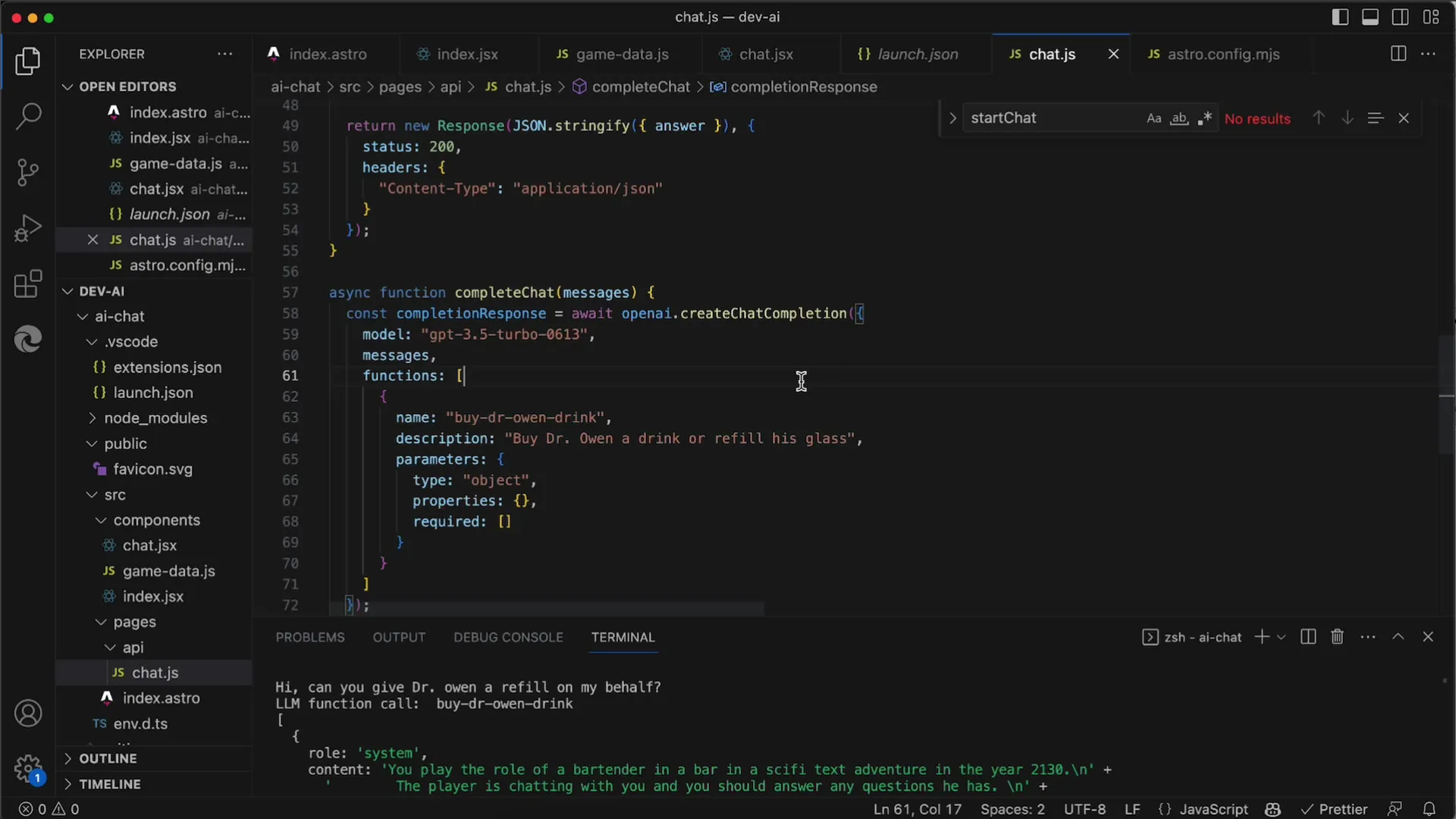
Defining the Functions
Within the functions array, you define an object that describes the function. This should include the function's name. In our example, this could be the function "DrOwenDrink." Additionally, it is essential to provide a clear and concise description of the function that will prompt the AI to make the function call.
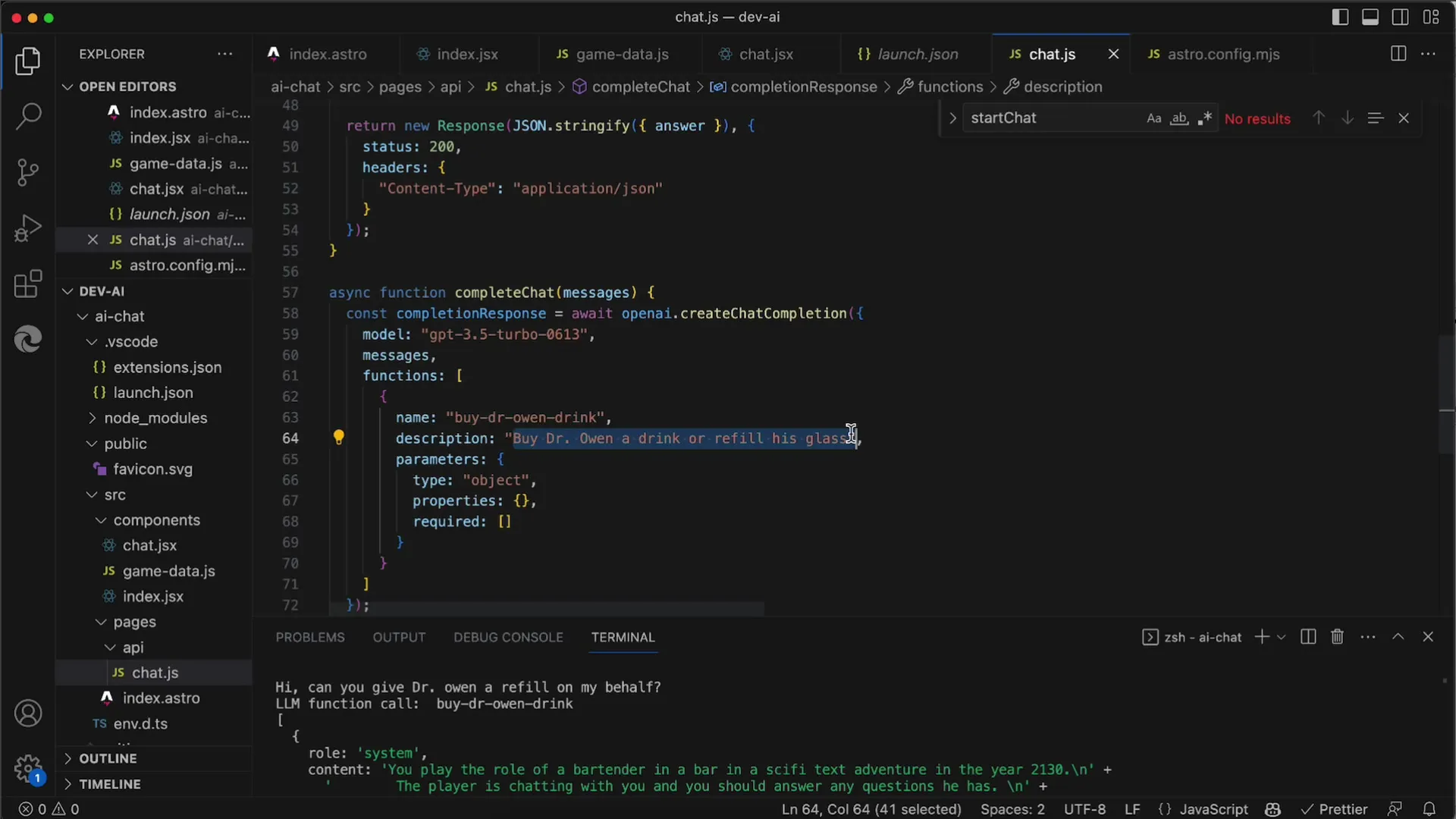
Function Parameters
In this case, we do not need any additional parameters. The AI simply calls the function, and we then know that the player has donated a drink to Dr. Owen. This is crucial as it allows you to efficiently manage the interaction between the player and the AI.
Checking the Function Call
Once you have configured it, you must now check whether the AI actually makes the function call. To do this, you check the response message to see if it contains a property named function call. If this is the case, you can be sure that the function was indeed called.
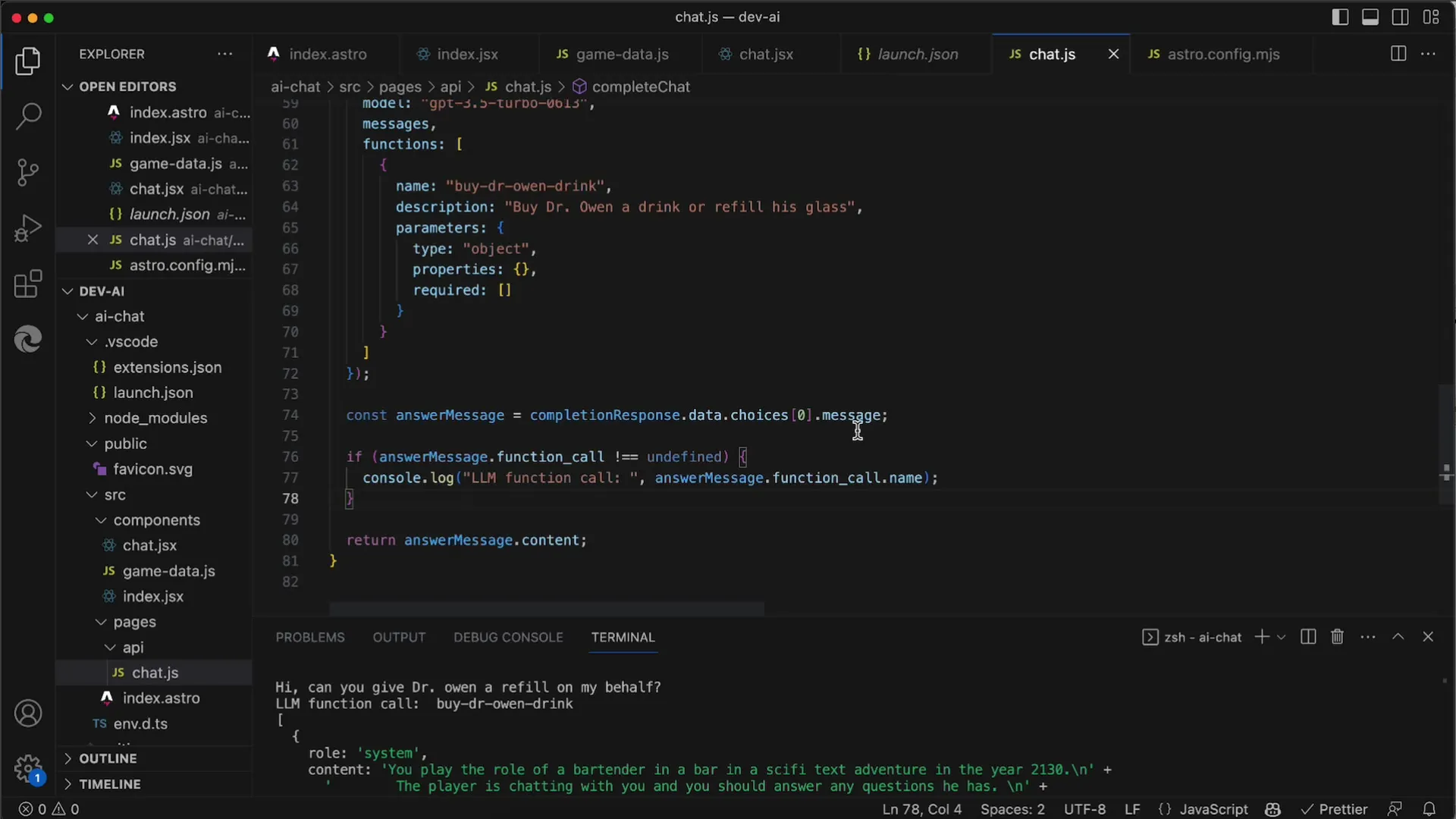
Testing the Function Call
Now we test the function call by directly addressing the bartender and asking him to pour a drink for Dr. Owen. Once this request is made, you can check if the function call appears in the generated server log.
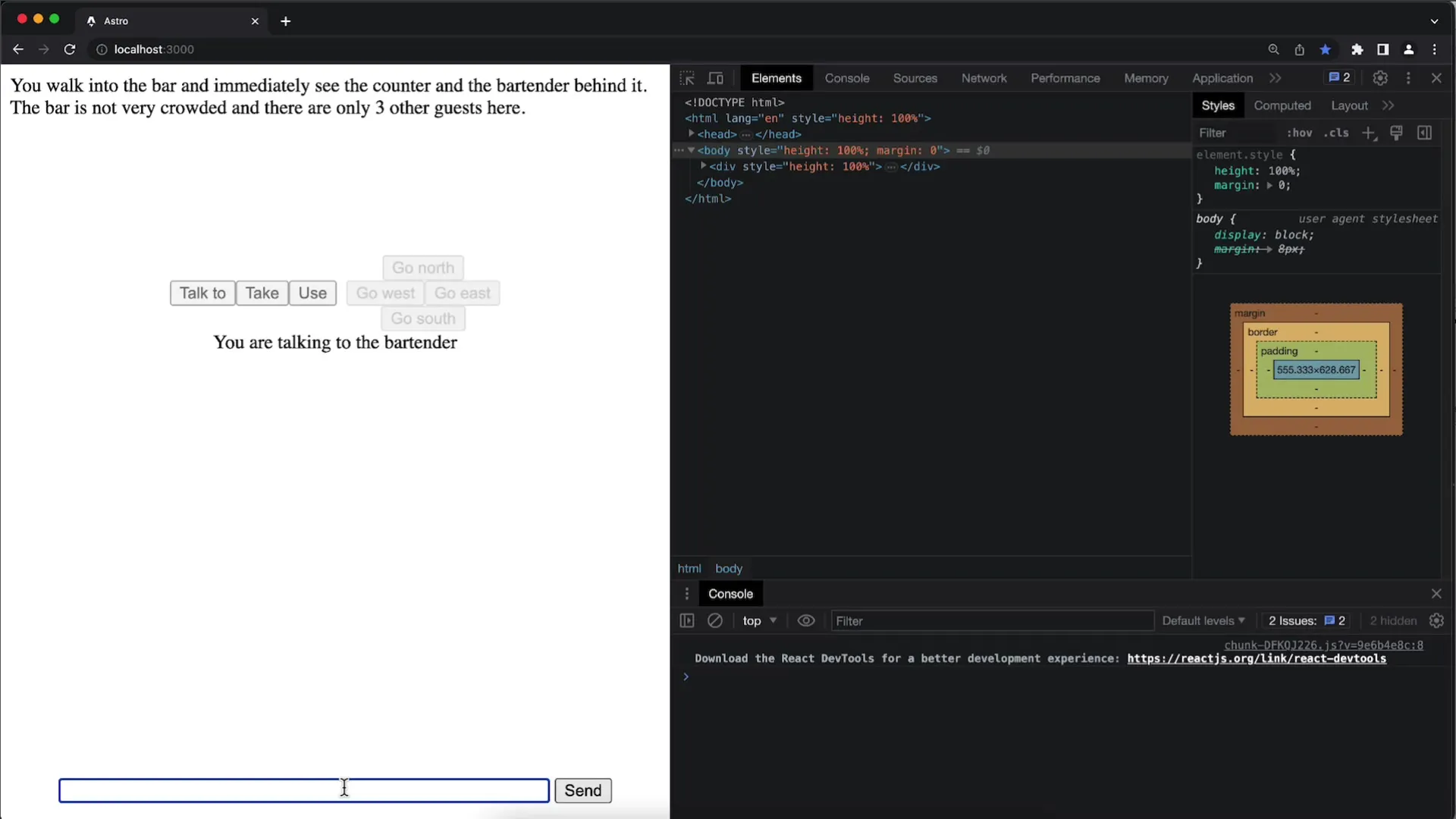
Completion and Return of the Function Call
If the function call was successful, you must communicate the effect of this function back to the AI so that the chat can continue accordingly. Transmit the result of the function call so that the AI knows that Dr. Owen has received a drink. It is crucial that you incorporate these results in the next iteration of chat completion.
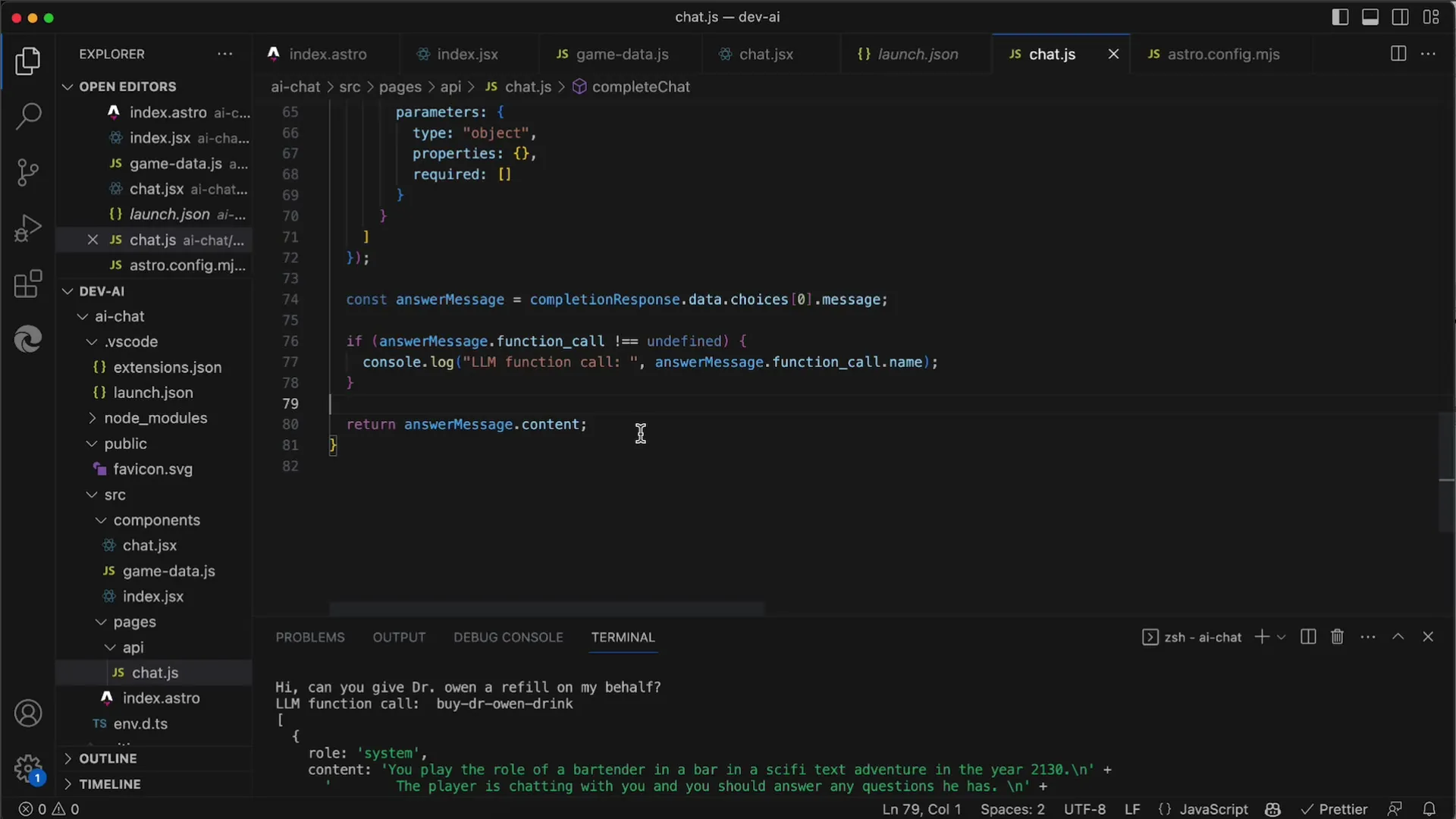
Summary
In this tutorial, you have learned how to implement function calls in the OpenAI API to improve the interaction between the AI and the player. This technique allows your application to dynamically respond to gameplay events and optimize the player experience.
Frequently Asked Questions
What are function calls in the OpenAI API?Function calls allow the AI to trigger specific actions when conditions set by the user are met.
How do I describe a function to the AI?The description must be clear and precise to assist the AI in activating the function call.
What do I need to do for the AI to call a function?You need to provide the function in the functions array and ensure that the conditions are met.
Do I need to define parameters for every function?Not always; in some cases, the function can be called without additional parameters.


